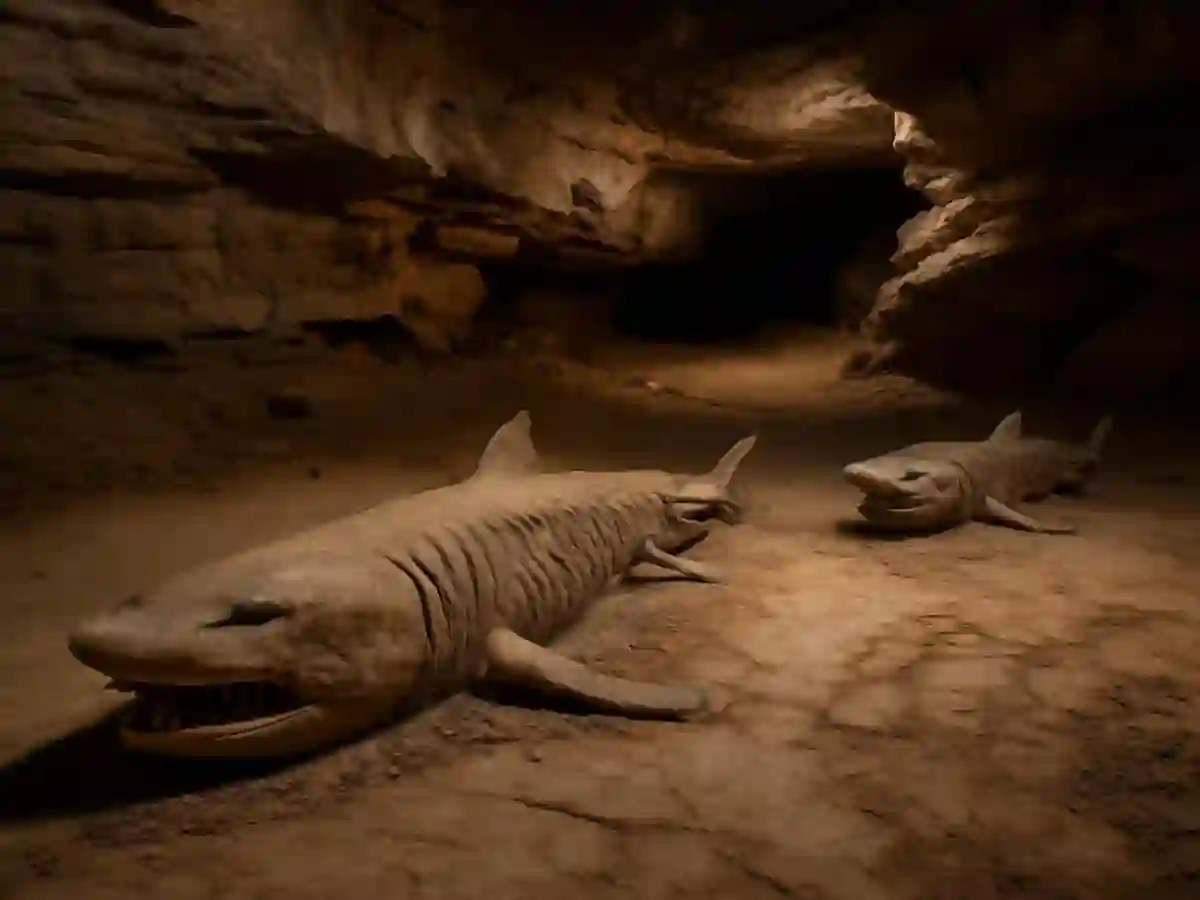When you think of sharks, your mind probably goes straight to the deep ocean.
But what if some of the oldest shark fossils ever discovered were hiding deep underground — in the heart of Kentucky?
That’s exactly what scientists recently found in Mammoth Cave, and it’s reshaping how we understand ancient marine life.
Unearthing Ancient Life in the World’s Longest Cave
Mammoth Cave, a sprawling underground labyrinth in Kentucky, is famous for being the longest cave system on Earth — stretching over 675 kilometers.
But what many didn’t expect was that it would also serve as a time capsule for marine creatures from a world that existed over 300 million years ago.
In a groundbreaking discovery, researchers uncovered two fossilized sharks that date back an astonishing 325 million years.
The People Behind the Discovery
This rare find was confirmed by paleontologist John-Paul Hodnett, who works with Maryland’s National Capital Parks and Planning Commission.
He teamed up with experts from the National Park Service Paleontology Program to identify the remains.
Their work has given scientists a fresh perspective on prehistoric sea life that once swam where Kentucky now stands.
Meet the Sharks: Troglocladodus and Glikmanius
The fossilized remains belonged to two extinct shark species: Troglocladodus trimblei and Glikmanius careforum.
These weren’t tiny fish — they grew up to 12 feet long, about the size of today’s oceanic whitetip sharks.
Both are part of a long-gone group known as ctenacanths, which roamed Earth’s oceans during the Carboniferous period when North America’s landscape was largely underwater.
One of the standout discoveries was a partial jawbone from a young Glikmanius careforum, which had cartilage structures still intact — a very rare preservation thanks to the cave’s unique environment.
Why These Fossils Matter
These ancient sharks offer more than just cool fossil photos.
They help scientists piece together the puzzle of marine evolution during the formation of Pangaea, Earth’s massive supercontinent.
Species like Troglocladodus and Glikmanius thrived in shallow coastal seas that once covered areas like Kentucky and Alabama.
Studying them helps researchers trace how tectonic shifts and changing seas shaped biodiversity.
Tracing the Evolution of Sharks
Every fossil discovered adds a new chapter to the story of shark evolution — from body size and tooth shape to jaw mechanics and diet.
The Mammoth Cave specimens are particularly valuable because they can be compared with fossils from around the world, offering insights into global patterns in ancient ecosystems.
A Team Effort in a Tricky Location
These discoveries didn’t happen overnight. A dedicated team of geologists, cave explorers, and paleontologists worked together, carefully navigating Mammoth Cave’s dark, narrow passages.
The environment can be dangerous, but the rewards — like finding fossils preserved in almost perfect condition — are well worth the challenge.
The cave’s consistent temperature and protective conditions have helped keep these delicate remains intact for hundreds of millions of years.
More Secrets Waiting in the Dark
This is just the beginning. Scientists believe Mammoth Cave still holds plenty of hidden treasures.
Thanks to advances in 3D imaging, mapping, and scanning technology, researchers are now better equipped to explore untouched sections of the cave system — and possibly uncover even more fossilized species from Earth’s ancient past.
Mammoth Cave: More Than Just a Natural Wonder
This discovery reminds us that even in places as well-known as Mammoth Cave, there are still ancient secrets waiting to be revealed.
It’s not just a tourist attraction — it’s a living, breathing archive of the Earth’s deep history.
And thanks to the continued work of dedicated scientists, we’re learning more and more about the prehistoric life that once thrived where we now walk.
